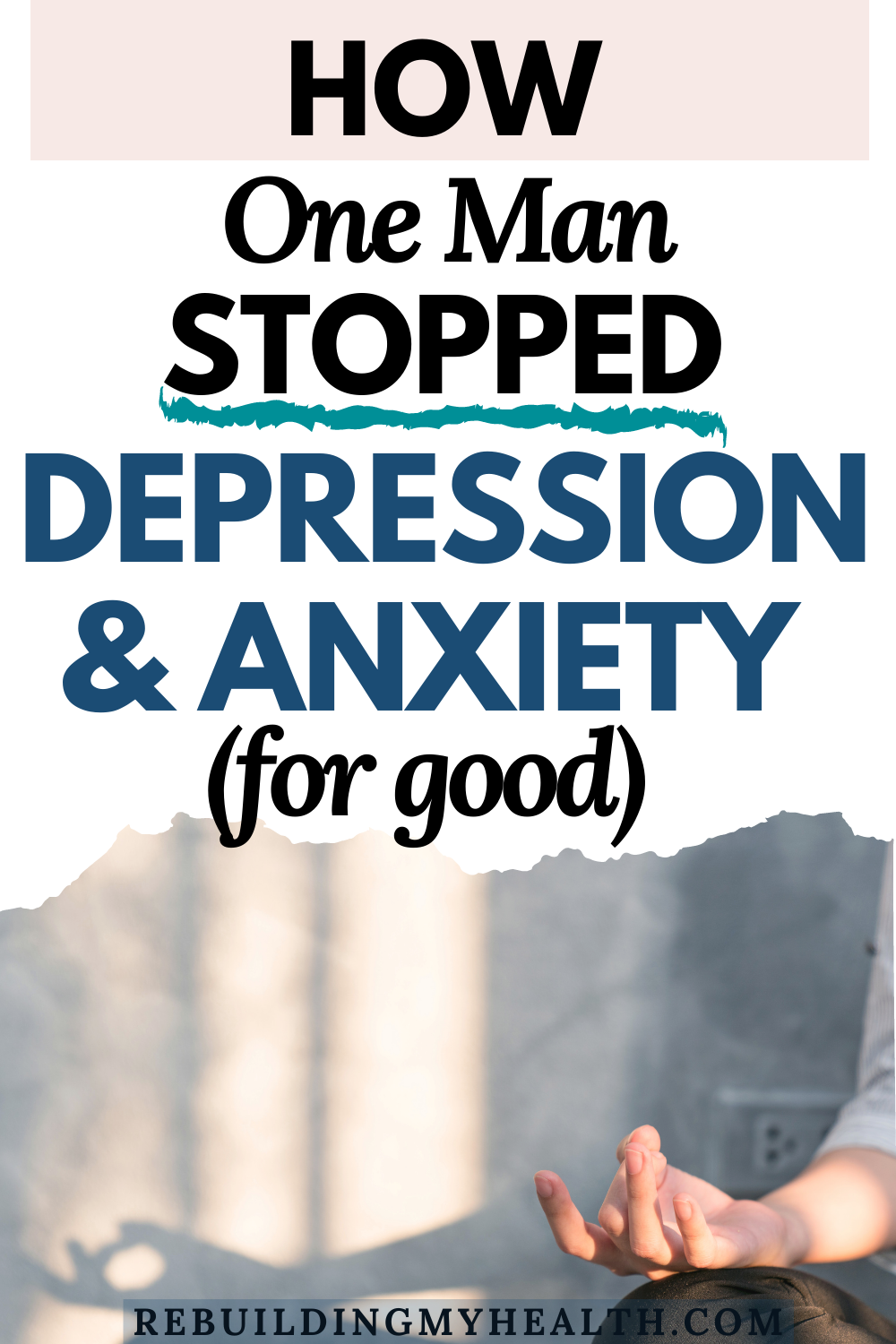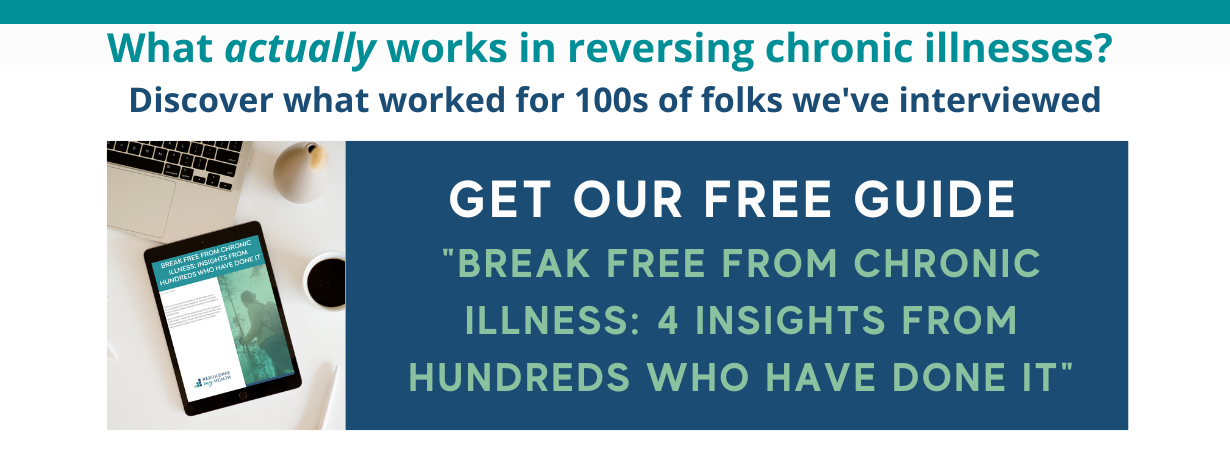Finally Ending Severe Depression – with Meditation
For years, Stuart Williams resisted meditation and other natural approaches to ease his crushing depression and anxiety.
How would simply sitting still achieve what 20 years of medications could not?
“I was extraordinarily anti-hippy,” he says. “I went to extra lengths to resist anything holistic. If it didn’t work via science, it would never work. I wanted to take a pill and be better.”
He had been on medication since the age of 16, but still, his lows brought thoughts of suicide.
“Twenty years is a long time to not feel any improvement,” he reflects.
The native South African came close to checking into the hospital in an effort to save his life.
Instead, he found the most unexpected path out.
Read on for more of Stuart’s story, and five simple meditation practices for anxiety and depression.
From Medication to Meditation
On a friend’s recommendation, Stuart finally turned to meditation.
It started with a four-day meditation course. Despite his skepticism, he noticed changes in his mental health almost immediately. While meditating, he would experience a second or two of encouraging stillness and spaciousness, of peace.
Soon, those periods of peace grew longer and expanded into his life beyond when he meditated.
As he learned more about meditation, he came to realize that his thoughts had largely been behind his depression and anxiety.
“My mind had created this entire world, which was mostly not true,” he says. “It was causing me so much grief and difficulty.”
Stuart continued to expand and deepen his practice of meditation and yoga. Yoga, Stuart says, is actually meditation.
“Classically speaking, the word ‘yoga’ didn’t refer to what people think of as yoga today,” he says. “There were no movements of poses. That only came into being in the 13th – 15th centuries and at that time there were only 15 poses (all of them sitting on the floor.) So the word ‘yoga’ refers to the entire system of spiritual practice that was developed over the last 2,500 years.”
NOT about Clearing the Mind
Stuart’s new meditation and yoga practices were so transformative that they changed his life trajectory. He quit his job and traveled to study the practice further, including living in ashrams in Thailand and Mexico.
Within five months, he found he no longer needed medication for depression or anxiety. However, he still takes a medication for epilepsy.
“I’m not advocating that people come off medication,” he says. “It has a place.”
Stuart would spend entire months in silence and partial solitude meditating. However, he stresses people don’t need to go the same route he did to find relief from depression and anxiety.
He suggests trying meditation daily for a couple of weeks without feeling disappointed if nothing has changed. However, some may see changes in that timeframe.
“You’ll start to notice some resilience and some moments of pause and calm,” he says. “It’s a cumulative effect, so the more time you give it, the more it becomes not only effective but a state of joy and wonder.”
Studies have shown that meditation can change the brain not only during the practice, but also when individuals are not meditating.
Stuart acknowledges that many find meditation challenging, but believes that’s because we’ve often been taught we need to clear our minds – a tough task for most of us.
“People sometimes assume that meditation means sitting in a chair and having a quiet mind, letting the mind be still,” he says. “That’s a really, really big misunderstanding. It’s usually unrealistic to expect the mind to be quiet and still when you start meditating. That’s what the mind does.”
Instead, he encourages others to simply observe their thoughts without passing judgement on themselves or their thoughts.
“You can observe the mind without having to follow it,” he says.
The Potential for Profound Impact
Stuart still experiences moments of depression and anxiety, but responds much differently than he did in the past.
“It’s just another emotion occurring in my body,” he says. “With practice, I’m fully aware that it will move along just as swiftly as any other emotion.”
These days, Stuart teaches others how to follow the practices that saved his own life.
Skeptical that meditation can work for you? Stuart says lack of belief in it doesn’t prevent it from working.
“It doesn’t require any level of faith,” he says. “Just give it a try. Even if you’re super skeptical like I was, there’s still the capacity for significant changes into your psyche, as well as many other changes – and it can have a profound impact in your life.”
Meditation Practices to Try
Stuart teaches yoga and meditation as a way to support mental health. He suggests a few practices to ease in beginners:
1. Walking meditation for anxiety
Wherever you are, walk up and down a straight line – in your living room or at the park. Pay attention to the sensations of your foot striking the ground, from heel to toes, back and forth. Focus on the sensations in the body.
“When you’re living in the future, you’re anxious,” Stuart says. “It’s not real. We’re making up stories about what’s true. We need to train ourselves to have the ability to put our attention where we want it.”
2. Counting breaths
Count your breaths, with an inhale and exhale as one complete breath. Go from one to 10 and then start again at one. Try to do this for 10 minutes. Don’t get discouraged if your mind wanders.
“If you’ve started to follow the stories of the mind, and go in the direction of the mind, then it’s not a problem. Don’t get angry or judge,” Stuart says. “That’s completely normal and happens to me all the time. You just bring yourself back and start from number one. See if you can count to 10 and it’s as simple as that.”
3. Calming the nervous system
In this breathing technique for anxiety, you’ll breathe in one nostril and out the other, while keeping one closed. Called Nadi Shodana, Stuart says it’s been scientifically proven to equalize the autonomic nervous system and activate the parasympathetic aspect.

If you enjoyed this story, you might also like: Canadian Woman Finally Finds Tactics to Stop Panic Attacks and Ease Anxiety.
The information on this site is for educational and inspirational purposes only and is not intended to replace the advice of qualified professionals. Keep in mind that what works for one person may not work for another. Always consult your healthcare practitioners before beginning new approaches or treatments. Some links on Rebuilding My Health may be affiliate links. This means that we may receive a commission - with no additional cost to you - if you make any purchases using those affiliate links. Rebuilding My Health is a participant in the Amazon Services LLC Associates Program. Learn more.


